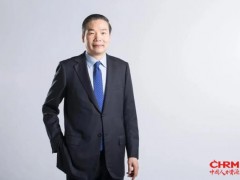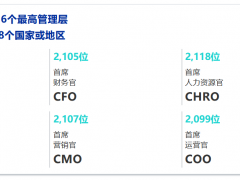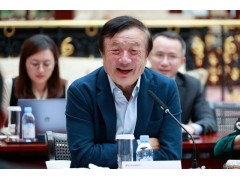Corporate leadership: The war for talent
General Electric’s newest product is a balding 55-year-old American executive with a background in finance and an international pedigree.
John Flannery rolled out of GE’s factory for corporate leaders last week, ready to succeed Jeff Immelt in August as only the 11th chief executive in the multinational’s 125-year history. His annunciation is the outcome of a process as meticulous and intensive as the manufacture of a composite fan blade for one of its aircraft engines.
The news came in the wake of recent pressure on Mr Immelt from investors, but GE says it began planning the succession in detail in 2011 — when 10 candidates were under consideration — and that the board identified this summer as the ideal time to move to a new leader as long ago as 2013.
Mr Flannery, who runs GE Healthcare, is a 30-year GE veteran, forged on its leadership production line and polished by carefully selected assignments in the US and abroad.
GE has always been among the most punctilious preparers of future leaders, drawing on best practice from the Chinese Communist party’s central school to the Boston Celtics basketball team. The GE way, though, is starting to look like an expensive, even anachronistic, exception to the methods used by many companies to shape their future leaders — if they bother shaping them at all.
The leadership meltdown at Uber, whose founder-chief executive Travis Kalanick resigned this week, has focused attention on what can happen to organisations that fail to develop their leaders.
Big companies have long recognised that they can no longer turn out leaders using a fixed template. As Mr Immelt said last week, his successor was chosen not “for what he knows [but] for how fast we think he can learn”.
The different approaches to a succession
The insider: General Electric
Research about whether — and when — it is better to hire an outside chief executive is mixed. GE considered external candidates to replac Jeff Immelt, but did not interview any, and decided in 2015 to focus on homegrown prospects for the role, deciding on John Flannery.
Apart from the inevitable pressure on training budgets, the shift from corporate hierarchies to looser networks and the devolution of power to self-managed teams mean companies can no longer be run by command-and-control leaders taught from management manuals. Boardswant to pick from a more diverse and international cohort of future leaders — a range that may not be available internally.
At the same time, promising younger employees, whom organisations used to count on to stay for decades, expect to move more frequently, or break out as entrepreneurs in their own right.
These pressures have created tension between “build” and “buy” models of executive development. Peter Cappelli, director of the Center for Human Resources at University of Pennsylvania’s Wharton School, says he has seen a long decline in the number of companies that wish to invest in intensive, GE-style leadership development plans.
“[The companies’] argument is that if we develop you, we’re just going to lose you, so why should we do that?” he says.
It is hard to put a figure on the amount spent on creating the next corporate leaders. Barbara Kellerman, a lecturer in leadership at Harvard’s Kennedy School, estimated in 2012 that more than $50bn was expended on leadership development annually in the US, including on business school courses. Deloitte reckoned that in 2013 US companies spent $15.5bn training future leaders.
But many large companies prefer to spend money on hiring ready-made senior executives than on developing them, bidding up executive pay in bloodier and bloodier phases of the “war for talent” first identified by McKinsey, another consultancy, in the late 1990s.
One private investment report, prepared in 2013 to identify future trends in spending on human resources technology, estimated the total available market for job advertising and recruiting systems at $30bn. That was 10 times the size of the future market for technology to manage and develop existing staff — a sign of wher the priorities may lie.
The outsider: Tesco
Boards often assume that they will need to recruit a chief executive from another company when there is a problem to be fixed and they need someone to take a fresh look. Tesco broke its 95-year habit of always promoting internal candidates to chief executive when the UK supermarket chain chose long-time Unilever executive Dave Lewis to replac Phil Clarke in 2014, as its UK sales deteriorated.
At the chief executive end of the pipeline, the supply of leaders still looks healthy. Spencer Stuart, the headhunting group, says only a tenth of new chief executives at S&P 500 companies were appointed from another company last year, the lowest level since 2004.
Problems can arise, though, when companies do not have a deep enough pool of potential replacements. Michael Birshan, a partner at McKinsey, says: “At least some of the clients that I’ve observed have been pulling in more leaders from outside. There aren’t jobs for life and employees don’t want jobs for life.”
As a result, he says, “there are going to be fewer companies over the whole economy that build their own”, and it will become more important for companies to be able to integrate talented executives from other organisations.
Companies that run deeper leadership development initiatives swear by their usefulness, but recognise that the way in which they choose, train and retain their future leaders has to change, in part to develop softer skills, such as empathy or creativity.
The insider-outsider: GlaxoSmithKline
Another approach, pursued by GlaxoSmithKline, is to hire promising executives externally at an earlier stage and add them to the mix of potential future leaders. Emma Walmsley, who took over from Sir Andrew Witty as chief executive in April, worked for L’Oréal for 17 years before joining the pharmaceuticals company in 2010.
For its 130 senior executives, Sky, the UK-based broadcaster, organises a programme called FutureNow.
It includes talks by thinkers, entrepreneurs and sportspeople, workshops and an annual retreat. The executives are also linked to an online application, Sky Hive, that allows them to share ideas and watch development videos about wellbeing or emotional intelligence. The aim is not to provide technical or management training, which Sky also offers, but to encourage the right culture and spark innovative thinking.
GE has long offered 650 of its senior executives intensive leadership training at Crotonville, its training hub in the Hudson valley north of Manhattan, or its satellites abroad. It also sends the most senior on two or three-day visits to places such as the D-Day landing beaches in Normandy, or to the bridge in Selma, Alabama, wher civil rights marchers clashed with armed police over voting rights for African Americans in 1965. “They’re meant to be moments of learning and reflection that people take back to their [work] environments,” says Susan Peters, GE’s senior vice-president for HR.
The failed outsider: Manchester United
David Moyes was brought in from Everton football club in 2013 to take over as manager of Manchester United from long-serving star manager Sir Alex Ferguson. He was branded “the chosen one” but was dismissed before the end of his first season in charge, proving how hard it is to take over from a successful leader — and that even the best-planned handovers can go wrong.
In the category of bespoke programmes, Johnson & Johnson has given seven of its most senior executives a team of specialists, including a dietitian and a performance coach, to shield them from burnout. The healthcare company this year launched the $100,000 programme for other companies, too.
Ms Peters recognises that GE has the advantage over smaller companies, in that it can tailor training for its high-potential executives, and rotate its future leaders between different jobs. “All of the candidates [for chief executive] were given moves, to demonstrate, from different platforms, how they lead,” she says. GE even structured the job of country head in India for Mr Flannery to give him experience in running industrial activities.
Unilever is another multinational with sufficient weight and breadth to provide different assignments for promising managers. Leena Nair, the consumer products company’s chief HR officer, says it designates some of them as “big bet talents” when they have completed five or six years. She says the long-term benefits of “build versus buy” far outweigh the costs of developing leaders within the group. “It’s much cleverer economically to build your talent,” she says.
But, like Ms Peters at GE, she add that such programmes need to be constantly updated to adapt to new requirements for leaders: “Every year we look at each other and say, oh my god, we need to do more.”
Younger managers fret, meanwhile, that they are not being offered the same opportunities as the generations above them. A 2016 survey of millennials by Deloitte found that 63 per cent of employees born since 1982 said their leadership skills were not being fully developed.
Ms Nair says properly structured development plans attract and keep younger managers, despite their often-cited desire to flit between jobs. “If you say [to them] you’re going to be doing this job for five years and it’s going to be broadly the same, of course you’re not going to keep them.
“But if you say you can shape this and, by the way, maybe you’d also like to take part in this project about something that excites you, then they’re going to stay.”
The founder: Uber
Travis Kalanick stepped down as Uber’s chief executive this week following a string of controversies, leaving a void at the top of the group, and exposing its neglect of leadership development. The board faces the near-insuperable challenge of choosing a replacement who can replicate the drive and commitment of the flawed founder-CEO.
The latest Deloitte report also suggests younger staff are clinging to career certainty amid political upheaval. The findings raise the possibility that they may rediscover the virtues of traditional leadership training, in the same way they have woken up to the attractions of vinyl records or hardback books.
Realistically, though, some companies have to let their talented executives move in order to develop, if they cannot offer them opportunities within the organisation. The HR head of a big European group says she keeps track of a network of alumni, waiting for the moment she may be able to attract them back.
Reid Hoffman, founder of linkedIn, has developed the idea of “tours of duty”, according to which companies set finite two- to four-year missions for staff, after which either party can decide whether enough is enough.
Prof Cappelli says this is typical of the Silicon Valley ethos, wher he says investment in leadership training has shrivelled away, giving rise to endemic disloyalty and a costly battle for the best employees. Google has encouraged staff to teach each other with a system called Googler2Googler or G2G, which included a seven-week mini-MBA. But critics note the company has no problem in attracting the best staff.
“Companies say they want to get better at hiring and better at keeping their own people, which, as a system, can’t possibly work,” Prof Cappelli says.
In fact, Mr Hoffman says it is possible to carry out successive missions within one company — and cites GE as a model. In The Alliance, co-authored with Ben Casnocha and Chris Yeh, he writes that “no person has ever become CEO of General Electric without completing numerous tours of duty”.
Silicon Valley does, however, offer one cautionary tale about the need for leadership development, in the shape of Uber. Before Mr Kalanick quit, it appointed Frances Frei, a Harvard Business School professor, as senior vice-president of leadership and strategy — one outcome of the founder’s admission that he “needed leadership help”.
One of the clearest recommendations of the investigation into a string of scandals at the transportation company was that senior managers should receive mandatory leadership training. It should include, said the report by former US attorney-general Eric Holder, such basic lessons as “how to effectively set organisational goals” and how to encourage “a culture in which everyone gets heard in a manner in which they are comfortable and employees feel safe to propose ideas”.
It is a long way from the systematic GE-style programme, but it is a start.
 手机版|
手机版|

 二维码|
二维码|








